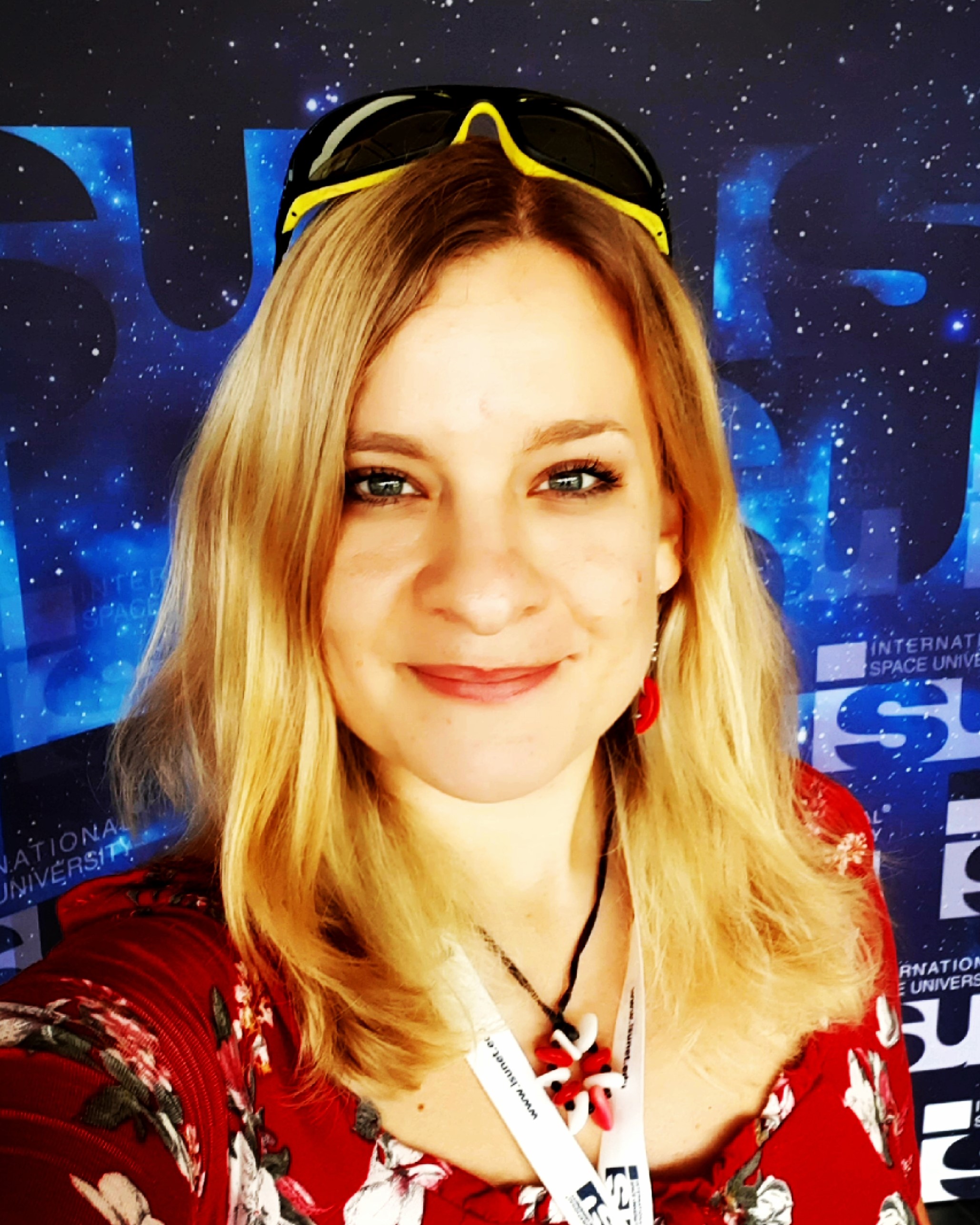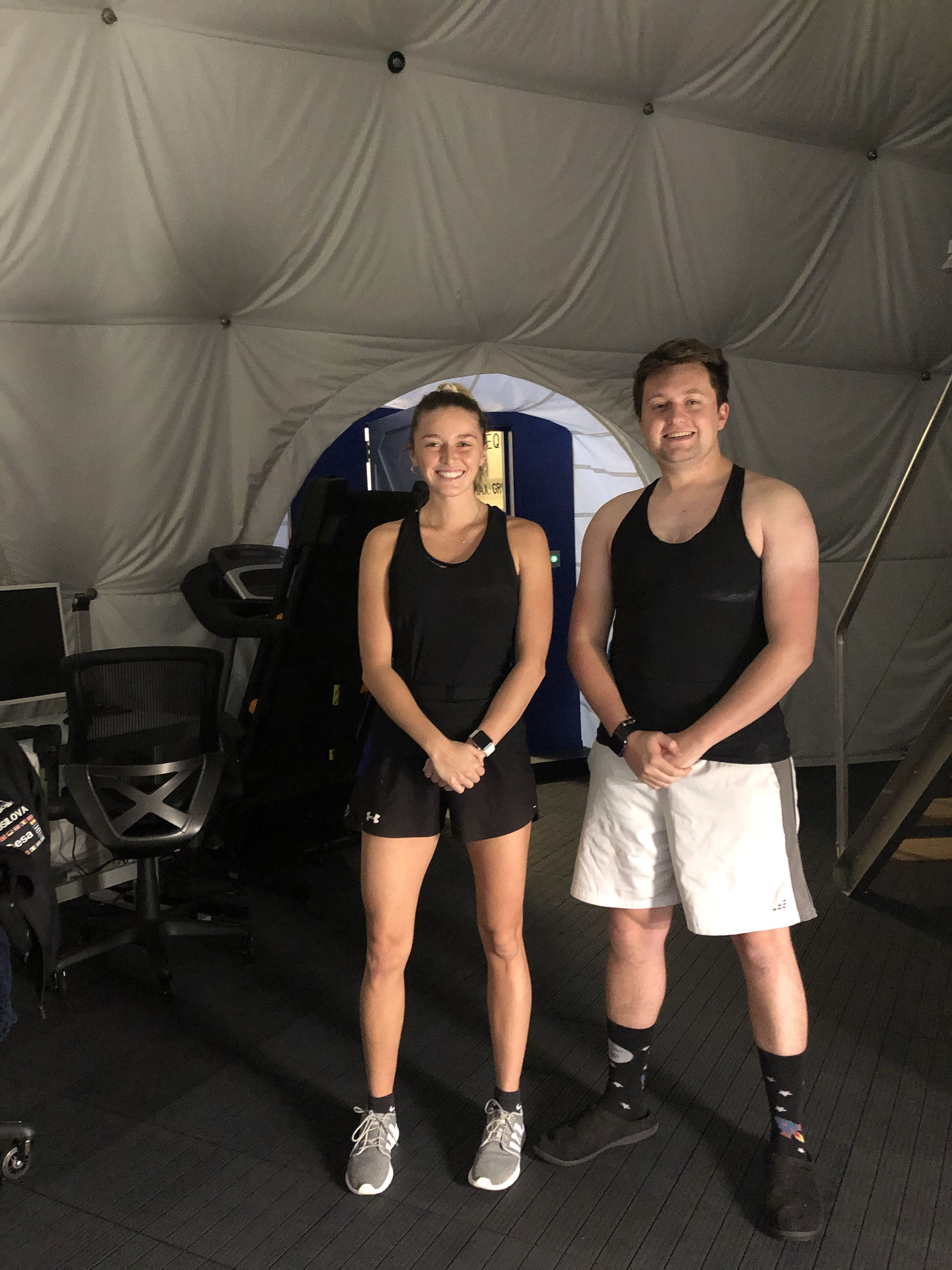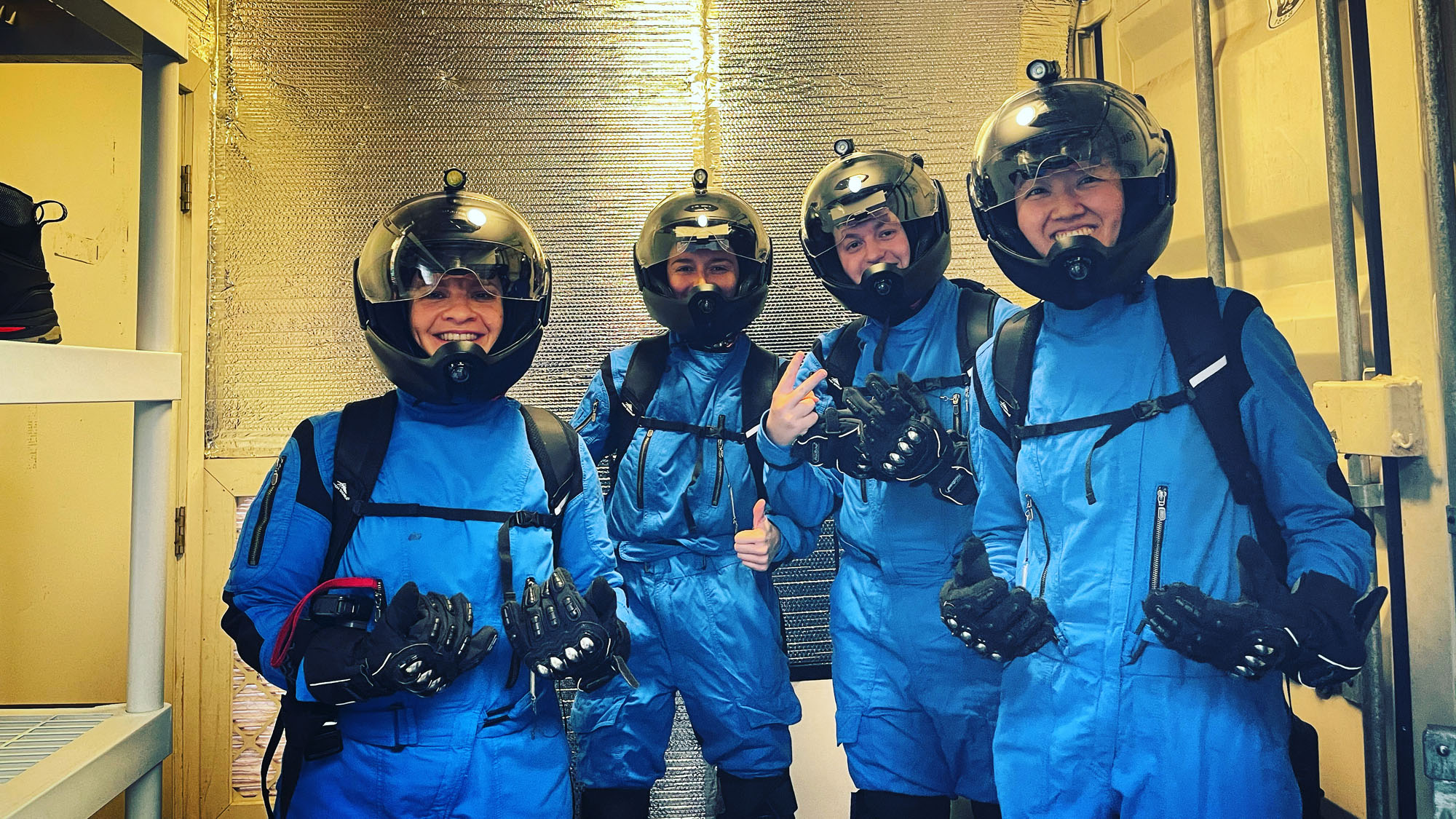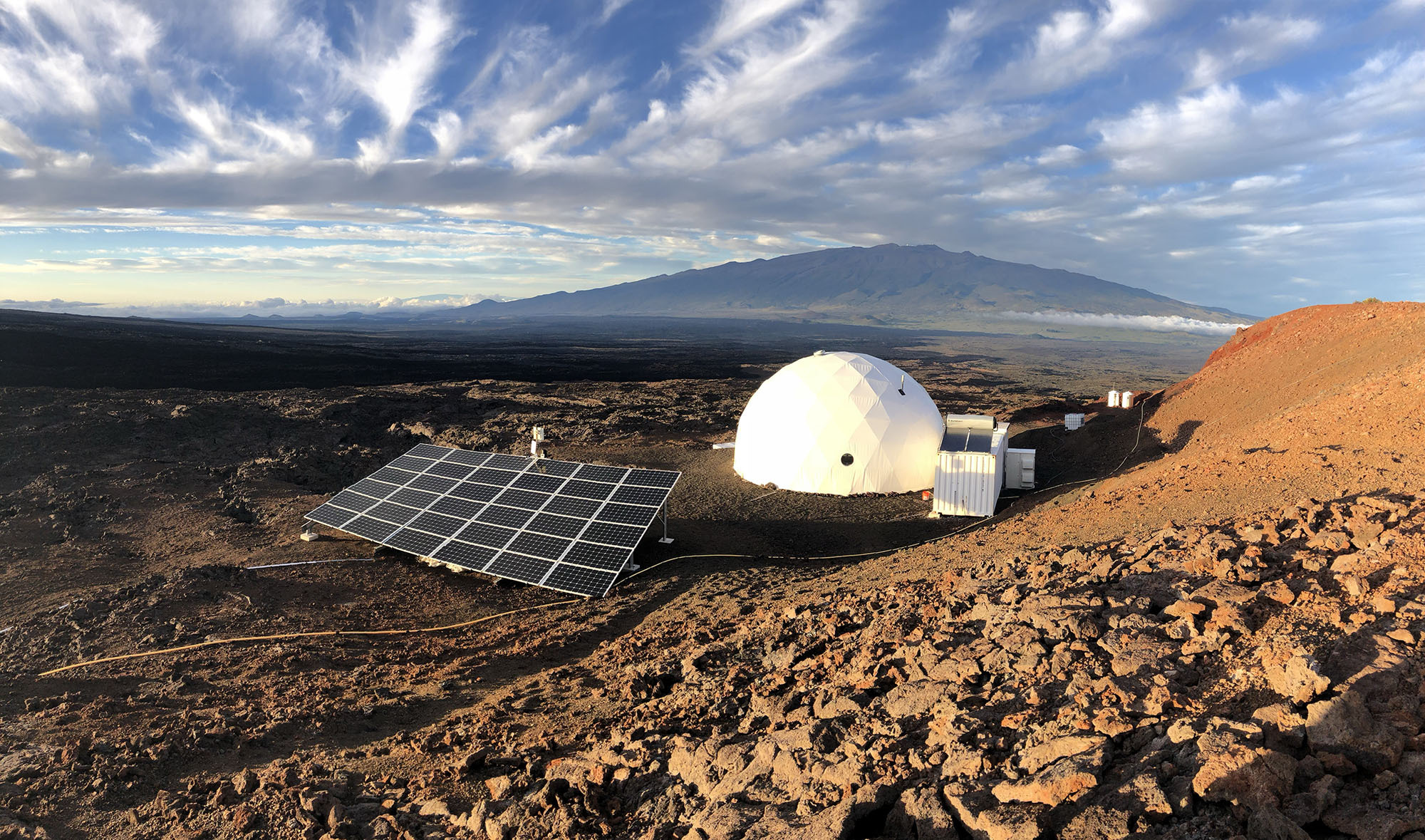The start of the Sensoria M3 lunar mission is like Groundhog Day — Commander's report: lunar day 2
Emotional whiplash, spaceship-lag and Groundhog Day can all be used to describe the start of the Sensoria M3 simulated moon mission at the HI-SEAS habitat.

Dr. Michaela Musilova is the director of Hawaii Space Exploration Analog and Simulation (HI-SEAS) program, which conducts analog missions to the moon and Mars for scientific research at a habitat on the volcano Mauna Loa. Currently, she is in command of the two-week Sensoria M3 mission and contributed this report to Space.com's Expert Voices: Op-Ed & Insights.
Commander's report for the Sensoria M3 mission at HI-SEAS
Lunar Day 2 (Dec. 5, 2020)
Space-lag or spaceship-lag? Whatever its proper name may be, I can definitely feel it. I barely enjoyed a day and a half on Earth before taking off for a new analog mission on the moon again. Now, I'm starting to feel the exhaustion from all this space travel while trying to re-adapt to my lunar environment. I'm distracted though. The habitat is filled with my lovely new crew and I just want to be getting to know them better. They all seem to be on top of their work and ready to settle into their new life.
My space-lag is also a bit emotional. I'm still getting over saying goodbye to the wonderful Selene II crew and creating space in my heart to accommodate my new space family of SENSORIA M3. The mission is part of the SENSORIA Program, which aims to support underrepresented groups within the space sector. This transition time is never easy, but I'm sure that I'll get through this easily with the support of my lunar friends. I have to keep reminding myself of all the positives that are ahead of me: experiencing novel adventures on the moon and partaking in original experiments during this mission. Crew bonding is one of my favorite parts of space missions and I'm looking forward to what this crew will do to get to know one another better. It seems like Cards against Humanity are on the menu, again.
Related: An all-woman Mars analog crew just 'returned to Earth' in Hawaii
Our vice commander, James Ward, has been helping as mission support for several missions at HI-SEAS. He is an astrophotographer and the owner of Epic Tours Hawaii. During the mission, he will be documenting our daytime and nighttime moonwalks using his camera equipment, star tracker and telescope.
Crewmember Emily P. Seto is a planetary protection and contamination control engineer at Honeybee Robotics supporting many upcoming projects such as NASA's Dragonfly mission to Saturn's moon Titan, NASA's Volatiles Investigating Polar Exploration Rover (VIPER) for the moon, and Japan's Martian Moon Exploration (MMX) mission to Mars' moon Phobos. On the SENSORIA M3 mission, she is overseeing several astrobiology and greenhouse related projects as the chief science officer. Emily has received multiple NASA grants and is continuing her work in in-situ technology development for future human planetary missions.
Breaking space news, the latest updates on rocket launches, skywatching events and more!
The chief engineer of our mission is Niko Blanks, a senior at Embry-Riddle Aeronautical University in Daytona Beach, Florida, studying for a bachelor's degree in spaceflight operations. For as long as he can remember, Niko has wanted to use his passion for space exploration to help people and make life multiplanetary. The focus of his research here at HI-SEAS is on energy expenditure characterization during EVAs (extravehicular activities, or moonwalks).
He is working on this with Lea Smart Miller, our habitat operations officer. She's another crewmember from Embry-Riddle Aeronautical University, where she is a master's candidate in human factors at as well as a graduate research assistant in the Spacesuit Utilization of Innovative Technology (SUIT) Laboratory. Lea is also working on optimizing astronaut performance on EVAs through heads-up display design.
Gianna McLaren is the science communication officer for our crew. She is a former ranger with the U.S. Forest Service and National Park Service, capturing the world around her through photography. Gianna is currently studying human factors in space settlement at the Kepler Space Institute in Tallahassee, Florida, focusing on the potential for the application of biomedical gerontology to mitigate the effects of the harsh space environment on human biology.
My name is Dr. Michaela Musilova and I am the Director of the HI-SEAS space analog facility in Hawaii. I am the commander of the SENSORIA M3 crew and I was recently the commander of the Selene II mission, which ended only a few days ago. The demand for lunar analog missions has been high, which is why we have had to schedule a number of missions almost back to back. While I enjoy leading these missions and becoming part of a new space family every few weeks, it is very difficult physically and psychologically.
As a crewmember of the SENSORIA M2 mission (a month ago) said to me, I experience a sort of emotional whiplash. I have to let go of one space family and almost instantaneously replace it with another. I do not forget my previous families, of course. On the contrary, I am still in touch with the tens of families I now have all over the world. However, they are no longer the center of my attention. My new, current crew is what occupies my mind the most. I want to make sure that they'll settle into their new home alright and that they will succeed in their research projects. Most importantly, I try my best to ensure that we all get along well and enjoy our time on the moon together.
This brings me to another strange emotional state that I have to go through — a sort of Groundhog Day. I was acquainted with the expression "it's like Groundhog Day again" only a year ago. These days, I'm starting to understand its true meaning. Bring a new crew to the habitat. Train them to survive on the moon or Mars. Explore lava tubes. Bond. Have heart-breaking goodbyes. Repeat. I have glossed over a number of details of course, but in essence, this is what I have been going through on multiple occasions this year. The SENSORIA M3 crew is learning the ways of the habitat really quickly, so at least the training part of my version of Groundhog Day is less painful. I keep reminding myself that it's their first time doing these activities on the moon so that I have plenty of patience in stock for their endless questions or silly ideas.
A crewmember on a previous mission asked if he could add the water accumulated in the dehumidifier into our soup. On this mission, a crewmember is using the dehumidifier water to take bucket showers. I couldn't help myself from smiling when both suggestions came up. They may seem out of this world, but that's what they should be. Thinking out of the box is vital for our survival off-Earth and I'm confident that we'll do just fine with this crew.
Commander Musilova signing off looking forward to what this mission will bring.
Follow Michaela Musilova on Twitter @astro_Michaela. Follow us on Twitter @Spacedotcom and on Facebook.
Follow all of the Expert Voices issues and debates — and become part of the discussion. The views expressed are those of the author and do not necessarily reflect the views of the publisher.

Dr. Michaela Musilova is an astrobiologist with a focus on life in extreme environments. She has a PhD degree from the University of Bristol and is a graduate from the International Space University's (ISU) Space Studies Program. Michaela's space research experience includes working at the NASA Jet Propulsion Laboratory, University of London Observatory, Canada-France-Hawaii Telescope, on NASA's and the U.K. Space Agency's MoonLite project, being an analogue astronaut and Commander of numerous simulated missions to the moon and Mars at the HI-SEAS station in Hawaii, and at the Mars Desert Research Station in Utah. Michaela is currently the Director of HI-SEAS, as part of the International MoonBase Alliance. She is also a visiting Professor at the Slovak University of Technology, Vice-Chair of the Slovak Organisation for Space Activities, Adjunct Faculty at ISU and the Senior Research Adviser for Mission Control Space Services Inc.
She has received numerous prizes and grants, including the Emerging Space Leaders Grant from the International Astronautical Federation (2016) and the Women in Aerospace – Europe Young Professional Award (2016), and she was selected as one of the most promising 30 under 30 by Forbes Slovakia (2015). Michaela is also actively involved in the Duke of Edinburgh's International Award, as a patron of the program in Slovakia and an Emerging Leader Representative for Europe, Mediterranean and Arab states. Furthermore, she enjoys participating in STEAM outreach activities from teaching at schools, giving public presentations, to working with the media and more, as well as encouraging people to pursue their dreams. For instance, she is an Advisory Board Member of the STEM Punks immersive programs for students and teachers.




